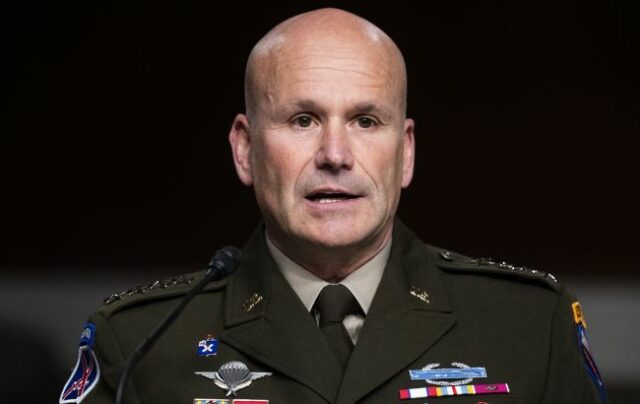Overcoming Hurdles: Ukrainian Pilots’ Journey to Mastering F-16s
As the world watches the ongoing conflict in Ukraine, a critical aspect of military capability is coming to the forefront: the training of Ukrainian pilots to operate advanced F-16 fighter jets. Recently, NATO’s top commander in Europe, General Christopher Cavoli, shed light on the unique challenges these pilots face as they transition from outdated Soviet-era aircraft to cutting-edge technology. It’s not just a matter of flying a new plane; it’s a completely different ballgame.
The Complex Transition
Making the leap to fourth-generation fighters like the F-16 isn’t just about getting behind the controls. General Cavoli emphasized that this transformation demands considerable effort, collaboration, and resources. “This transition process is particularly intricate,” he said, highlighting the many layers involved in such significant technological advancement.
Imagine switching from a basic smartphone to a complex high-end model overnight without any prior experience. It’s daunting! For the pilots, understanding new avionics, navigation systems, and combat tactics represents just the tip of the iceberg. A well-developed training regimen is crucial, and this is where international cooperation plays a pivotal role.
The Language Barrier
One critical hurdle that may not immediately come to mind is language. As Cavoli pointed out, proficiency in English is essential. The manuals, instructions, and technical communications for the F-16s are predominantly in English, which presents a significant learning curve. It’s like trying to read a new recipe in a foreign language while cooking for the first time—missing one instruction can lead to disaster.
Some pilots may require foundational English training before they can even begin to engage with the F-16 systems effectively. A unique tip here is for organizations supporting this transition to incorporate immersive language training methods, such as simulations or role-playing exercises, to enhance the learning experience.
The Pilot Shortage Dilemma
To add to the complexity, there’s a notable shortage of military pilots in Ukraine. This shortage not only complicates current training efforts but also restricts the number of operators who can eventually fly the F-16s. According to various reports, Ukraine has faced a loss of personnel, which stresses the system further. It’s like trying to fill an ever-growing gap with an empty bucket—every drop counts, but it’s just not enough.
This critical shortage not only affects training timelines but also underscores an urgent need for increased resources and personnel. It is crucial for international partners to prioritize support in developing a sustainable pipeline of trained pilots. The situation mirrors the struggles many organizations face when they lack the necessary workforce to meet their objectives, emphasizing the importance of strategic human resource planning.
The Bigger Picture
The multifaceted challenges of Ukrainian pilots adapting to F-16 training underscore the complexities of modern military training in conflict zones. As highlighted by General Cavoli, effective knowledge transfer and skill enhancement rely heavily on international support—after all, teamwork makes the dream work. This situation serves as a reminder that enhancing defense capabilities isn’t just about technology; it’s about the human element.
In conclusion, supporting Ukraine’s aviation efforts entails a robust commitment to training, resource allocation, and addressing language barriers. As the world looks on, it is imperative that we advocate for strategies that empower not only the pilots but also the broader defense infrastructure in Ukraine. Together, we can harmonize these efforts to build a resilient military capability, paving the way for a more secure future.





